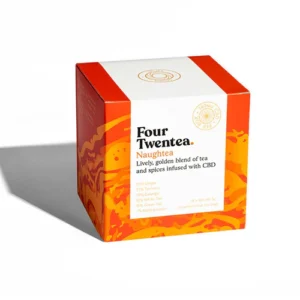Dim Sum: A Global Phenomenon
Dim Sum: A Global Phenomenon
As we continue exploring the fascinating world of dim sum, it’s important to look at its transformation into a global phenomenon. While its roots are firmly planted in Cantonese culture, dim sum has adapted and thrived across continents, becoming an integral part of global food culture. Its versatility, flavors, and community-centered dining style make it a favorite for all types of eaters, from the culinary adventurer to the casual diner.
Dim Sum’s Global Expansion: How the World Fell in Love
Dim sum’s global rise isn’t just about the popularity of the dishes themselves, but the experience they offer. Here’s a closer look at how dim sum made its mark on different regions around the world:
1. Dim Sum in the United States: A Brunch Revolution
In the U.S., dim sum has evolved into a brunch-time favorite, with many restaurants offering dim sum during morning and afternoon hours. The fast-paced, ever-changing restaurant scene in cities like New York, San Francisco, and Los Angeles gave dim sum the chance to evolve into something new.
- Dim Sum Brunch Menus: Many American restaurants have revamped traditional dim sum for brunch settings. The convenience of bite-sized dishes served on carts or small plates fits perfectly into the fast-paced brunch culture, allowing diners to sample various flavors in one meal.
- Fusion Dim Sum: American dim sum is often fused with local food traditions. For example, dim sum sliders, dim sum pizza, and dim sum tacos are some of the inventive adaptations that have emerged, combining the classic dim sum format with popular American flavors.
- Dim Sum Chains: In many urban areas, dim sum chains have risen to meet the demand for this beloved cuisine, making dim sum more accessible to a wider audience.
2. Dim Sum in Europe: The Perfect Social Dining Experience
Dim sum’s spread to Europe was fueled by its alignment with the continent’s love for social dining. Across countries like the UK, France, and Spain, dim sum became a popular way for groups to gather, share food, and enjoy a communal dining experience.
- Dim Sum Restaurants in London: London’s Chinatown became an early adopter of dim sum culture, with many restaurants serving a wide variety of traditional and modern dim sum dishes. In recent years, dim sum has spread to mainstream restaurants, offering new generations the chance to explore this rich culinary tradition.
- Dim Sum with a European Twist: Some European chefs have begun to combine dim sum with their own regional flavors. For example, French-style dim sum might feature rich foie gras or truffle-infused fillings, while Italian dim sum could incorporate ingredients like basil pesto or mozzarella.
Dim sum is beloved in Europe not only for its food but also for its ability to foster conversation. It’s often enjoyed during long, leisurely meals, where families and friends bond over various small plates and steamed delicacies.
3. Dim Sum in Australia and New Zealand: From Chinatown to Mainstream
Dim sum is now a well-established part of Australian and New Zealand dining culture, particularly in major cities like Sydney, Melbourne, and Auckland. In these countries, dim sum has become synonymous with quality and fresh ingredients.
- Locally-Sourced Seafood: Restaurants in Australia take advantage of the region’s incredible seafood, incorporating fresh crab, mussels, and prawns into their dim sum offerings. These ingredients are a perfect complement to the delicate nature of dim sum.
- Modern Australian Influences: Dim sum chefs in Australia experiment with native ingredients like finger lime, wattleseed, and bush tomatoes, which lend a uniquely Australian twist to traditional dim sum dishes.
As more people from different cultures discover dim sum, Australia and New Zealand’s increasingly diverse population has contributed to a growing number of fusion concepts and experimental dim sum dishes.
The Dim Sum Experience: A Social and Cultural Tradition
Dim sum has always been more than just food—it’s an experience that brings people together. Traditionally, dim sum is eaten during the morning or early afternoon as part of a family gathering or celebration. The experience is often centered around sharing, which is integral to dim sum culture.
1. The Tradition of Dim Sum Tea Houses
One of the most famous ways to enjoy dim sum is at a tea house or dim sum restaurant, where food is often served in small steaming baskets or on small plates, carried around on carts by servers. These carts offer a variety of dishes, and diners can simply pick the items they wish to sample. This traditional service style creates an interactive and communal atmosphere that is a key part of the dim sum experience.
- A Tea-Infused Meal: Dim sum is often paired with Chinese tea, typically oolong tea, jasmine tea, or pu-erh tea. Tea complements the flavors of dim sum and is considered an essential part of the meal. The ritual of tea service elevates the entire dining experience, making it a moment of enjoyment and relaxation.
2. Dim Sum as a Celebration
In Chinese culture, dim sum is often a part of celebrations, such as weddings, birthdays, and family gatherings. Special occasions are marked by an elaborate spread of dim sum dishes, ensuring that everyone has a little something to enjoy. The tradition of sharing small, bite-sized portions emphasizes togetherness, which is a core value of Chinese culture.
- Festive Dim Sum: Certain dim sum dishes are often served during special celebrations, such as lotus leaf-wrapped rice for New Year or sweets and dumplings for weddings. These foods carry cultural significance and symbolize prosperity, good luck, and happiness.
The Future of Dim Sum: Embracing Tradition and Innovation
Dim sum’s journey has only just begun. While it’s rooted in rich cultural history, dim sum is continuously evolving to meet the needs of a globalized world. The future of dim sum promises to be as dynamic and diverse as its past, with more innovation, sustainability, and creativity shaping its development.
1. Technology and Dim Sum
In today’s digital age, technology is making its mark on the dim sum experience. From digital menus and online ordering systems to delivery apps, the way we access and enjoy dim sum is changing. The convenience of ordering dim sum from your smartphone allows more people to experience the tradition from the comfort of their own homes.
- Virtual Dim Sum Experiences: Some restaurants have even adopted virtual dim sum events, where customers can order and experience dim sum from the comfort of their own kitchens. These events are streamed online, offering a community-based experience without the need for physical proximity.
2. Sustainable Dim Sum
As diners become more conscious of the environment, dim sum restaurants are embracing sustainability. Efforts to reduce waste, such as offering plant-based fillings, organic ingredients, and biodegradable packaging, are becoming more common in the dim sum industry.
Many chefs are also exploring the use of local, seasonal ingredients and reducing their environmental footprint by sourcing from sustainable farms and fisheries. This commitment to sustainability helps ensure that dim sum remains relevant in the years to come.
Conclusion: Dim Sum’s Enduring Legacy
Dim sum is more than just a meal—it’s a cultural treasure, a communal experience, and a reflection of culinary mastery. Whether enjoyed in the hustle and bustle of a traditional teahouse or reimagined in modern fusion restaurants, dim sum continues to unite people across the world through its delicious flavors, rich history, and cultural significance.
As we look to the future, dim sum remains a living, evolving tradition, embracing new ingredients, techniques, and trends while staying true to its roots. It’s not just about the food—it’s about the joy of sharing a meal with others, experiencing the world’s diverse flavors, and keeping an age-old tradition alive for generations to come website.














Post Comment